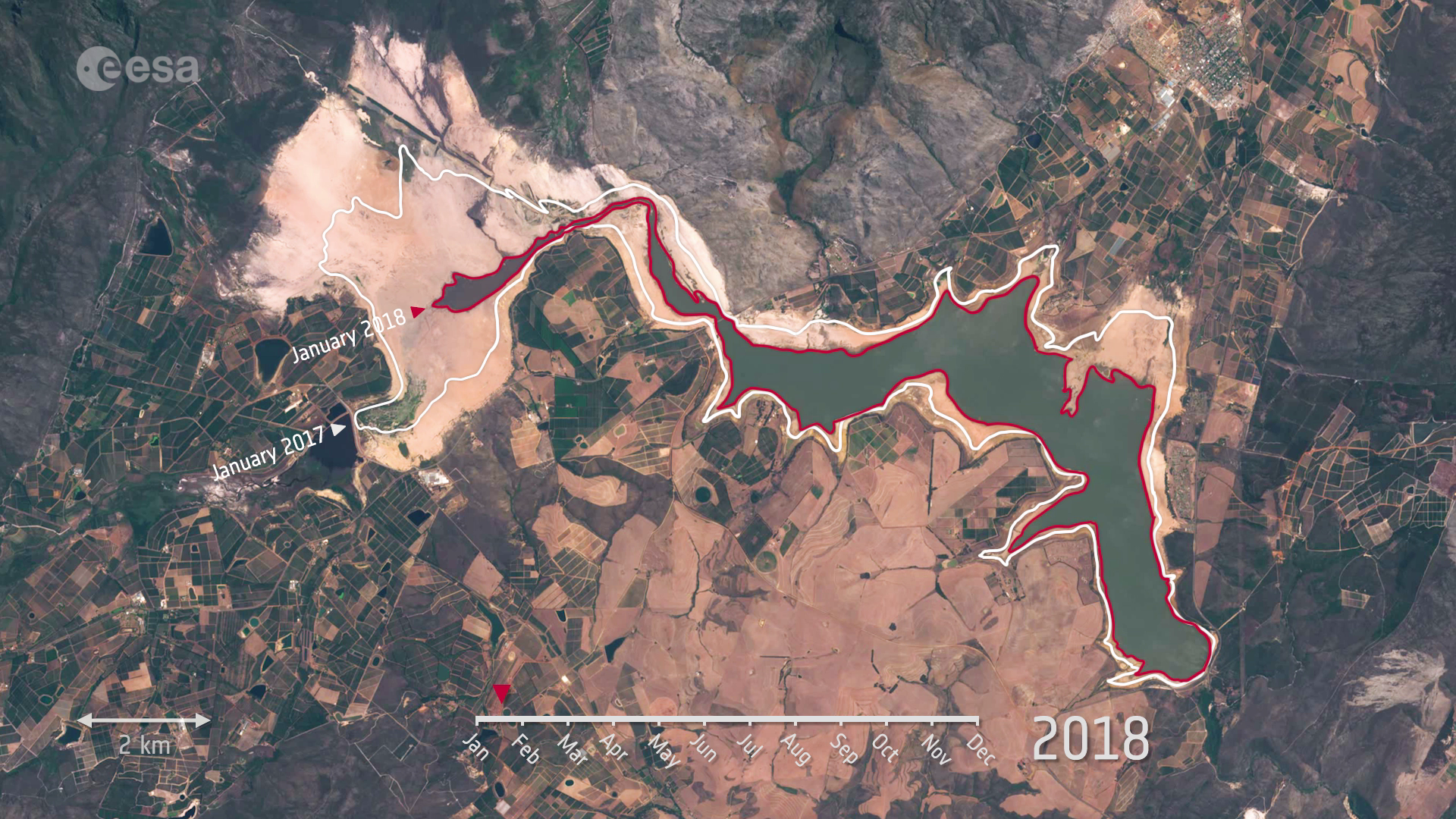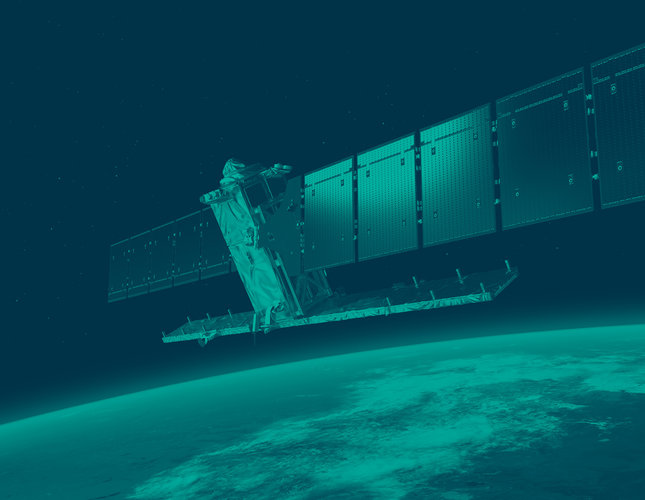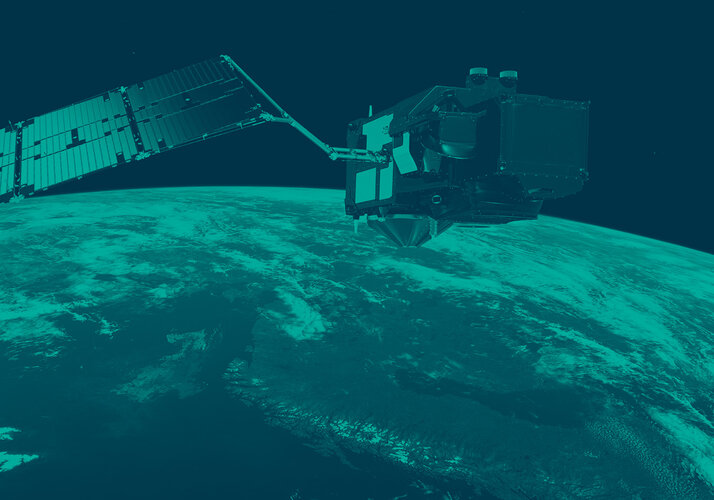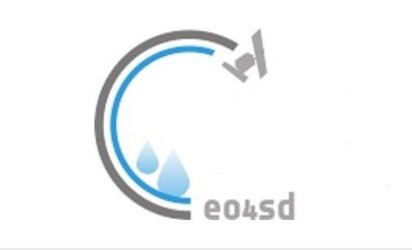Safeguarding our most precious resource: water
According to this year’s Global Risk Report by the World Economic Forum, water crises are one of the five biggest risks to society. ESA is working with development banks to help water-resource authorities use information from satellites to manage this precious resource.
With water under pressure from over-exploitation and pollution, one of the UN Sustainable Development Goals is to ensure the availability and sustainable management of water and sanitation for all.
While progress is being made, there are ever-increasing demands for freshwater, especially for agriculture. In fact, the Food and Agriculture Organization states that 70% of the freshwater drawn is used for agriculture alone. And, with a growing global population to feed, this could rise.
Water security is of particular significance for African countries subjected to the effects of climate change and increasing populations.
Information from satellites observing Earth can map and monitor the vital resource, as the video below explains.
Through its TIGER and Earth Observation for Sustainable Development initiatives, ESA develops applications in close collaboration with its African and international partners to respond to the urgent need for reliable water information in their countries.
The initiatives also support research, capacity building and training within both national and transboundary water authorities.

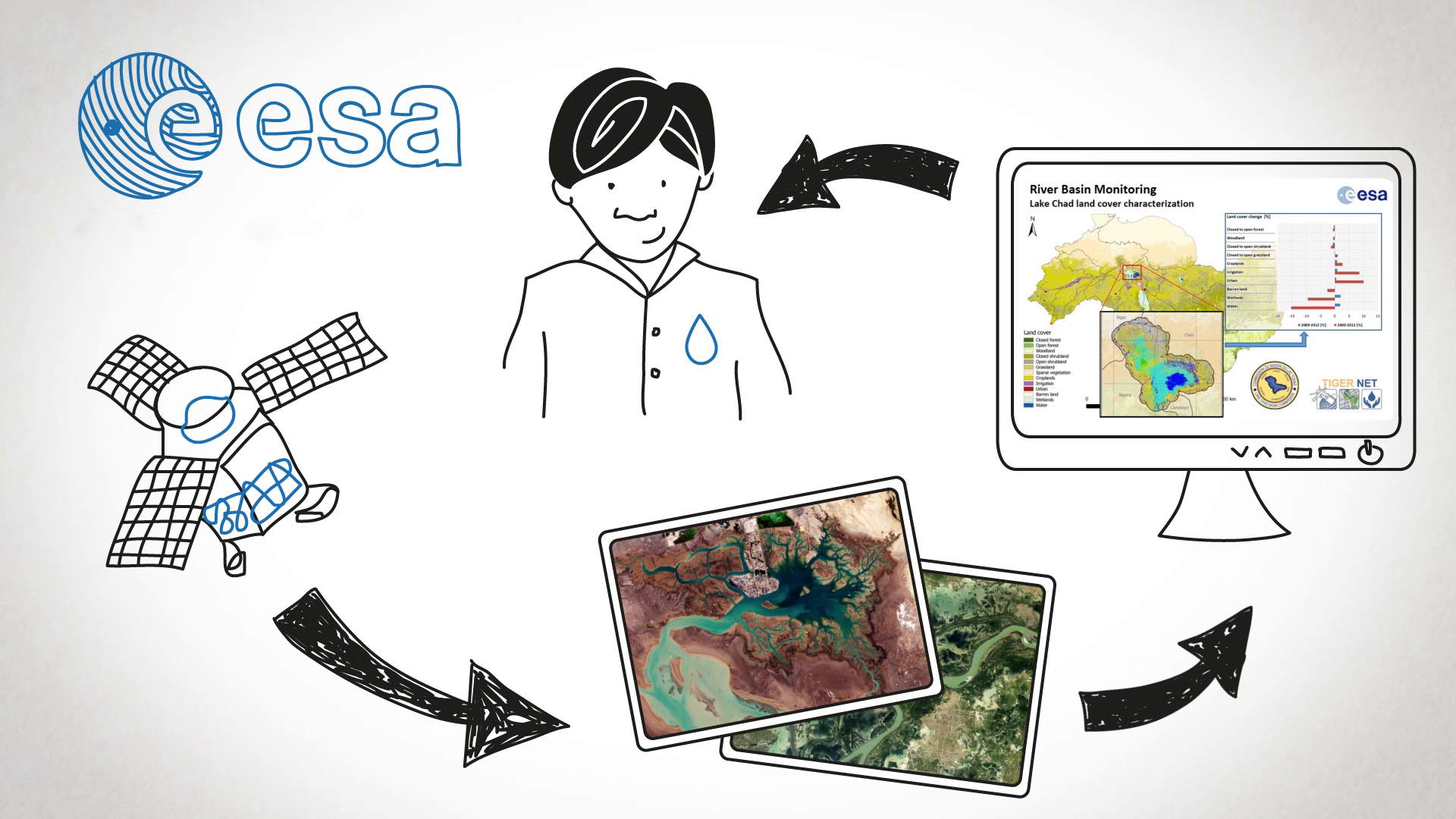
Access the video
ESA’s Benjamin Koetz said, “While we work continuously to help authorities and companies to use information from satellites to safeguard water, today is World Water Day – so a good occasion to draw our attention to this fundamental but fragile resource.
“By providing information on water extent and quality, flooding, evapotranspiration and soil moisture, satellites are an essential tool to remind us every day what vulnerable resource water is.”
An example of this is the recent issue of water scarcity in the Western Cape Province of South Africa.
Here, water levels in the Theewaterskloof Dam have dropped dramatically in recent years. The dam is the major source of water for domestic and agricultural uses in the region including the city of Cape Town.
Over the last year, this lack of water has caused the production of grain to drop by more than 36% and the production of wine grapes to drop by 20%, for example.
It is estimated that the dam would need to receive at least three years of good winter rainfall for it to return to its earlier healthy level.
As part of the TIGER initiative, the Stellenbosch University is applying machine-learning software to data from the Copernicus Sentinel-1 and Sentinel-2 missions to monitor the situation.
Tsitsi Bangira from the university said, “Monitoring the rise and fall of freshwater in the Western Cape region is essential, particularly in times of scarcity, so that this important resource can be managed appropriately.
“Our research shows that the frequent observations we get from the Sentinels along with machine-learning software can provide the information that is needed to do this at a regional scale.”
To help stimulate and understand the research challenges of monitoring our global water resources, members of the international science community will attend ESA’s Mapping Water Bodies from Space workshop next week.


